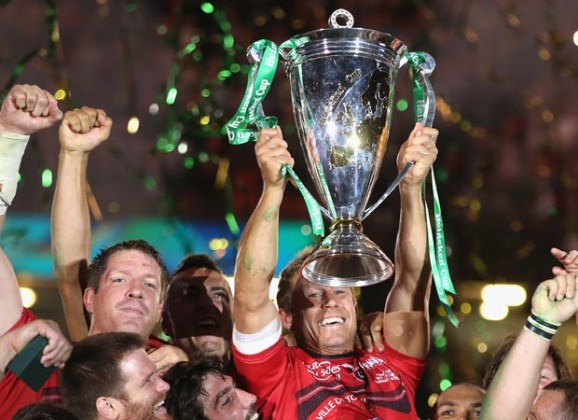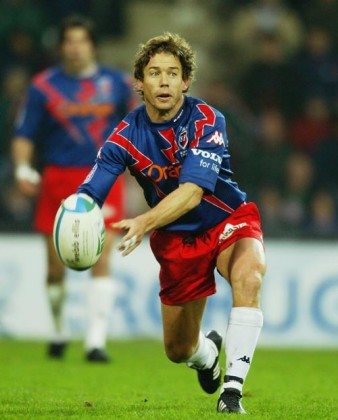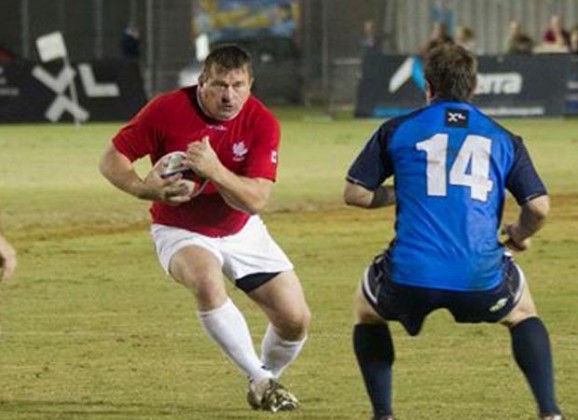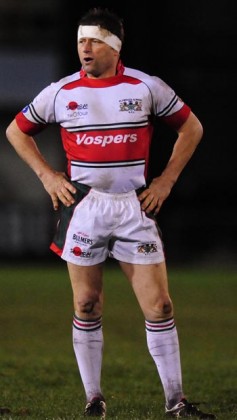
 I have absolutely no idea who comes up with these ideas but today – October 5 – has been designated as ‘Silver Sunday’ in which we are all encouraged to appreciate and laud the older members of our society. Their wit and wisdom, enduring strength and talent, hard earned life experience and toughness, their calm detachment when needed yet general fizzing zest for life.
I have absolutely no idea who comes up with these ideas but today – October 5 – has been designated as ‘Silver Sunday’ in which we are all encouraged to appreciate and laud the older members of our society. Their wit and wisdom, enduring strength and talent, hard earned life experience and toughness, their calm detachment when needed yet general fizzing zest for life.
I only know all this by the way because I have just been listening to the splendid Joanna Lumley advertising the event on the radio, or should I say wireless for our older readers.
Nonetheless it seems the perfect opportunity to celebrate the ‘old b*****rs’ in our particular society – rugby union – those ageing warriors who refuse to acknowledge the passing of time. There are still a few plying their trade at the elite level, thank God, while the junior ranks are positively teeming with the middle-aged men with expanding waistlines who should probably know better but who refuse to see sense and hang up their boots and abandon their seats at the back of the team bus.
So today we are unashamedly going to sing the praises of the ‘silver scrummies’ and greybeards who adorn our game. It’s time, just this once, for the pampered youngsters to stop hogging the limelight and take a back seat.
The most cursory of glances around the current rugby scene reveals all kinds of ‘oldies’ who have defied the years and produced some of their best and most effective rugby recently. Peter Stringer, Jamie Cudmore and Nick Easter (all 36), Victor Matfield (37), Nathan Hines and Sereili Bobo (both 38), Brad Thorn (39). Simon Shaw was still doing his stuff to great effect at 39 a couple of years back down at Toulon.
At Saracens last week against Sale it was a joy to watch Neil de Kock (35 but fitter than players ten years younger) go to work in tandem with the internationally retired Charlie Hodgson (33) who on his day can still make all England‘s young apprentices at fly-half look at tad shabby.

Jonny Wilkinson
Meanwhile who would seriously argue that the greying Jonny Wilkinson didn’t produce the best and most consistent rugby of his career in his mid-30s at Toulon in the two years after his England career finished?
Similarly I’ve just dived into the wondrous statistical section at scrum.com armed with a pocket calculator and can reveal that the peerless Diego Dominguez scored 622 points in 45 Tests after the age of 30 and helped himself to 639 Heineken Cup points during that period. That will do for me and I suspect Ronan O’Gara’s record will if anything be even more impressive but frankly there are not enough hours to research his achievements and heroics in the latter stages of his career.
“It’s an interesting area and I think perhaps we are beginning to appreciate older players again,” says Sir Clive Woodward whose venerable but triumphant England side at the 2003 Rugby World Cup was quickly dubbed “Dad’s Army” by the Australian Press. “If a player’s talent and pre-eminence isn’t reliant on his speed and supreme fitness then there is no reason why he shouldn’t continue at the top level. There will have been a huge ‘investment’ in that player over the years, why just throw it away because of his date of birth? With the right conditioning, as we have seen in many sports, elite athletes can go into their late 30s and barring serious injury why that shouldn’t be the case with rugby.
The oldest player to ever take the international field for a Tier 1 or Tier 2 nation is Canada prop Kevin Wirachowski who was 40 years and 243 days old when he came on as a replacement in their 30-9 defeat against New Zealand Maori in 30-9 although the pedants might argue whether that actually constitutes a Test match. It certainly does for Canada, definitely not in New Zealand.
Second in line, and with no hint of a caveat, is All Blacks hooker Ned Hughes who was four months younger than Wirachowski when he played the last of his six Tests for New Zealand, against South Africa in 1921. Hughes was an interesting character, who fell foul of the NZRFU and was declared a professional in 1909 soon after he had made his All Blacks debut.
His sins were firstly to go on strike with colleagues from the Hamilton club in 1908 when they refused to play a game in a full-blown blizzard in Invercargill and then, with his card possibly already marked as a troublemaker, he was unwise enough to appear in a local fund raising match played under Rugby League rules. Clearly beyond the pale Hughes was exiled from New Zealand rugby union . . . until 13 years later when the All Blacks found themselves seriously short of a hookers against the 1921 Springboks. Suddenly that unfortunate Rugby League connection didn’t seem so serious after all.

Diego Dominguez
The only other 40-year-old to have played Test rugby is one of my favourite rugby characters, Uruguay No.8 Diego Ormaechea who had just passed that landmark when he skippered Uruguay against South Africa at the 1999 World Cup when, if I recall rightly, Los Terros gave the Boks pack a pretty decent workout.
At 6ft and 16st Ormaechea should, of course, have been a frontrower but that’s the one position Uruguay are usually well catered for so he unselfishly switched to No.8 instead where he played internationally for 20 seasons, and that is not a misprint. He is now one of South America’s leading veterinary surgeons while his son Agustin has emerged as one of the stars of the modern-day Uruguay side who are on the cusp of qualifying for RWC2015.
In terms of ancient debutants Frederick George Gilbert is your man. Gilbert had been playing full-back for Cornwall, the Royal Navy and Devonport Services for the best part of 20 years when the shock call came for England’s opening game of the 1923 Five Nations. Bear in mind that England were hardly scraping the barrel, having won the Grand Slam in 1921 and losing just one match in 1922.
This was a side in its pomp.
Anyway, at 38 years and 340 days, Gilbert, who has just been elected as the Navy’s rep on the RFU committee, enjoyed a more than satisfactory debut against Wales at Twickenham when England won 7-3. He played better still three weeks later when England beat Ireland 23-5 at Welford Road – the last home Championship game ever played away from Twickenham – but then injury struck and he missed the rest of the season.
Still, Gilbert could claim to be part of an England Grand Slam-winning squad, an unexpected bonus to take into his rugby dotage.
One of the fabled ‘oldies’ of course was Pontypool prop Tony “Charlie” Faulkner who officially made his Wales debut aged in 1975 at the age of 34 which left many a grizzled prop in Gwent scratching their heads and counting their fingers because they seemed to have been scrummaging against him since the dawn of time, if not before.
Not even Charlie’s closest colleagues ever learned his true age and Bobby Windsor used to love spinning a yarn down at Pontypool about the medicals which Wales used to sporadically undertake and which frightened the life out of an ageing Charlie who was deeply suspicious of them. Apparently one time Bobby, the guinea pig, went in first and underwent some rudimentary tests with the conversation going something like this (the yarn differed slightly from week to week).
“Bobby, what would happen if I covered your left eye?” said the doctor.
“I’d go half blind, doc,” replied Bobby.
“And what would happen if I covered both eyes?
“I’d go completely blind, doc,” came the reply.

Kevin Wirachowski
Bobby, having been given the all clear, reported back in some detail after this interrogation and then rehearsed the simple replies with Charlie so that his mate would go through on the nod. A deep breath, knock on the door and it was Charlie’s turn.
“Charlie what would happen if I cut your left ear off?
“I’d go half blind,” replied Charlie.
“And Charlie what would happen if I cut your right ear off?
“I’d go completely blind, doc?”
“And how is that Charlie?”
“Because my hat would fall over my ears, doc.”
As slippery as a bag of eels and sharp as a needle these old-timers! Windsor himself was very reluctant to depart the playing scene. I thought he had long gone when I pitched up to report Pontypool for the South Wales Argus between 1985-88 but Bobby still seemed ever-present, either as a stalwart captain of their 2nd XV – Pontypool Athletic – who would have given most 1st XVs a decent match – or playing for the 1st XV itself, more often as a prop rather than hooker. I seem to recall his official farewell match and shindig, at the age of 41, was an Easter game against Nuneaton in 1987 but I’m not sure he didn’t slip on once or twice after that when he was coaching the team.
Another who never quite knew when to call time was the remarkable Argentinian fly-half Hugo Porta, the Pumas first player of world renown. The multi-talented Porta – an architect before he became Argentina‘s ambassador to South Africa during that historic 1991-95 era – made his Test debut against Chile in 1971 and was the mainstay of the team right through to the 1987 World Cup, which seemed the logical time to call halt.
Not a bit of it. Porta ploughed on regardless and was 60 days beyond his 39th birthday when he lead the Pumas against Scotland at Murrayfield in 1990. Then came the offer of the ambassadorship to South Africa and rugby finally took a back seat although he continued to train and play socially.
By 1996 he was the Argentina’s minister of sport and then in 1999 the UAR wanted to celebrate its centenary against a World XV. Perhaps it would be politic to ask the minister of sport if he would care to be involved in anyway. Did he ever. Having retrieved his old boots from the garden shed, Porta, at the age of 46, went straight back into serious training and, although the Pumas lost 50-31, Porta acquitted himself well opposite Craig Chalmers and even kicked a penalty although the match is not regarded as a full international. Bravo.

Graham Dawe
The granddaddy of them all, to coin a phrase, is probably Graham Dawe who came to senior rugby late, played for Bath for decades, delayed retirement by joining Sale and then returned to the West Country where he still periodically did his stuff for Launceston, Plymouth Albion and Cornwall, normally when nominally serving as coach or director of rugby.
The last confirmed sighting of Dawesie in competitive action was at the Brickfields on Halloween night 2009 when he came on as a replacement in Plymouth Albion’s 31-25 Championship win over Nottingham, almost certainly the only recorded instance of a 50-year-old playing in a professional game of rugby. But who knows what the future holds?
Dawe keeps himself formidably fit working on his farm on the Devon-Cornwall border. Perhaps like the comic book character Wilson of The Wizard he has discovered the elixir of life and will come down from the hills again sometime and lace up his boots in anger one more time. A fiver says we haven’t seen the last of Graham Dawe on a rugby field.
Today might not be the worst day to ponder a little on ageism and rugby. The cult of youth has chipped away at our appreciation of the older brigade for way too long. At senior level important international careers start so early these days – 18 or 19 – that by 30 you can be under the false impression that somebody’s career is done and dusted.
One bad injury, a couple of average games and they are considered on the way out. Too old and flaky. Miss a tackle and it’s all down to your advancing years, not because, just for once, you simply made a mess of the tackle. Pull a hamstring and it’s because you are ancient and knackered, not because you have had dodgy hamstrings since the day you were born.
Always the talk is of the new wave, the modern era, the next generation and we in the media are part of that process. The “new kid on the block” is an absolute staple for the written Press, one of the easiest stories to write and most enjoyable to read. Unless a team is winning constantly, like New Zealand, there is always a subtle subliminal pressure to change and just get rid of the older guy. Get the new young guy in and see what he can do.
When it comes to selection youth, with one or two exceptions such at George North or Toby Faletau, is invariably promoted slightly ahead of time, while older players are often shown the door – or feel pressurised into retiring or stepping down from Tests – before their sell-by date.
Many coaches preparing for World Cups nearly four years in advance wantonly dispense with outstanding players because they simply don’t believe in their longevity, the logic of which I’ve never fully grasped. Better surely to always select on merit, monitor the situation closely and only apply the axe when and if they are no longer up to it physically. That moment might be further away than you think. Why prejudge the issue?
As the comic George Burns, who lived to 100 despite his industrial consumption of Cuban cigars, once said: “You can’t help getting older but you don’t have to get old.”
*This article was first published in The Rugby Paper on October 5.

2 Comments
You must be logged in to post a comment Login
Leave a Reply
Cancel reply
Leave a Reply
You must be logged in to post a comment.




























Pingback: important link
Pingback: Webb Schools